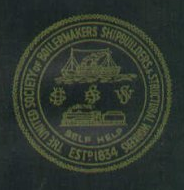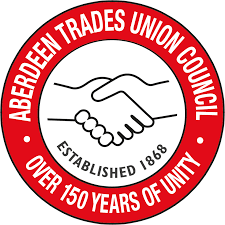In British politics, an affiliated trade union is one that is linked to the Labour Party. The party was created by the trade unions and socialist societies in 1900 as the Labour Representation Committee and the unions have retained close institutional links with it.
The Co-operative Party is a centre-left political party in the United Kingdom supporting co-operative values and principles. Established in 1917, the Co-operative Party was founded by co-operative societies to campaign politically for the fairer treatment of co-operative enterprise and to elect 'co-operators' to Parliament. The party's roots lie in the Parliamentary Committee of the Co-operative Union established in 1881.

The Canadian Labour Congress, or CLC is a national trade union centre, the central labour body in Canada to which most Canadian labour unions are affiliated.

The Operative Plasterers' and Cement Masons' International Association of the United States and Canada (OPCMIA) is a trade union of plasterers and cement masons in the construction industry in the United States and Canada. Members of the union finish interior walls and ceilings of buildings and apply plaster on masonry, metal, and wire lath or gypsum. Cement masons are responsible for all concrete construction, including pouring and finishing of slabs, steps, wall tops, curbs and gutters, sidewalks, and paving. The organization is a member union of the AFL–CIO and Canadian Labour Congress.

The Ceramic and Allied Trades Union (CATU) was a trade union representing pottery workers in the United Kingdom.
The National Association of Operative Plasterers (NAOP) was a trade union representing plasterers in the United Kingdom.
The Structural Building Trades Alliance (SBTA) was an American federation of labor unions in the construction industry. It was founded in 1903 and existed until 1908, when it affiliated with the American Federation of Labor (AFL) and became the Building Trades Department.

The Amalgamated Association of Operative Cotton Spinners and Twiners, also known as the Amalgamation, was a trade union in the United Kingdom which existed between 1870 and 1970. It represented male mule spinners in the cotton industry.

The Amalgamated Society of Boilermakers, Shipwrights, Blacksmiths and Structural Workers (ASB) was a trade union in the United Kingdom. Many of its members worked in shipbuilding, in which industry it was the leading trade union, while over time it also developed strength in engineering and construction.

The National Union of Scottish Mineworkers (NUSW) is a trade union in Scotland, founded in 1894 as the Scottish Miners Federation. It joined the Miners' Federation of Great Britain, and in 1914 changed its name to National Union of Scottish Mineworkers. It survives as the National Union of Mineworkers.

The Irish Trades Union Congress (ITUC) was a union federation covering the island of Ireland.

The Irish Congress of Trade Unions, formed in 1959 by the merger of the Irish Trades Union Congress and the Congress of Irish Unions, is a national trade union centre, the umbrella organisation to which trade unions in both the Republic of Ireland and Northern Ireland affiliate.
The Amalgamated Society of Engineers (ASE) was a major British trade union, representing factory workers and mechanics.
The National Federation of Building Trades Operatives (NFBTO) was a trade union federation in the United Kingdom, consisting of unions with members in construction and related industries.

The Printing and Kindred Trades Federation (P&KTF) was a trade union federation in the United Kingdom.
The Scottish Union of Bakers and Allied Workers was a trade union representing bakers and confectioners in Scotland.
The Operative Builders' Union was an early trade union federation representing construction and maintenance workers in the United Kingdom.
The Amalgamated Society of House Decorators and Painters (ASHDP) was a trade union representing painters and decorators in the London area of England. The union repeatedly tried to expand across the country, but was ultimately unsuccessful in doing so.
The United Operative Masons' Association of Scotland was a trade union representing stonemasons in Scotland. Active for nearly ninety years, its membership and importance varied greatly over time; at its peak, it represented the large majority of stonemasons in the country.

Aberdeen Trades Union Council (ATUC) is the body made up of affiliated trade union branches and organisations working in the Aberdeen and Aberdeenshire area to promote the interests of workers in the region. The ATUC provides services to affiliated branches on a wide range of industrial, social and community issues and is affiliated to the STUC. It has an office based in Aberdeen, Scotland.










